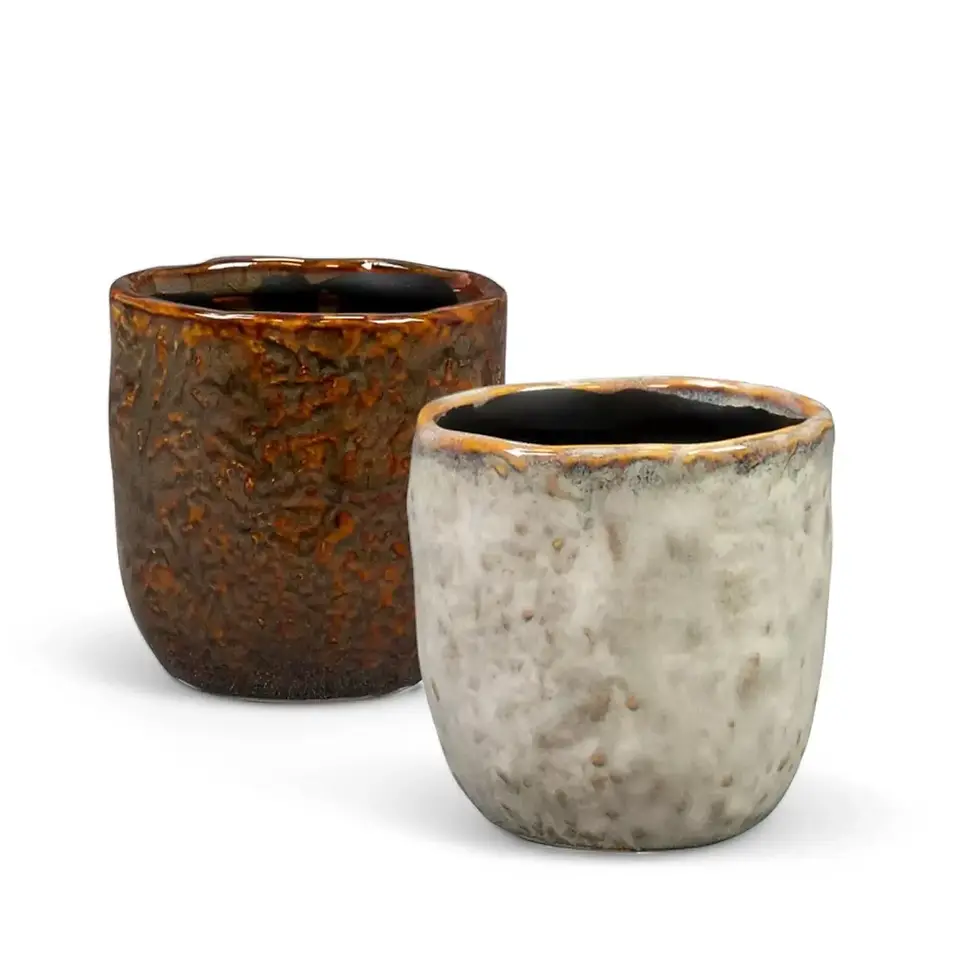Philodendron hederaceum var. oxycardium 'Cream Splash' – Care Guide and Insights
Philodendron hederaceum var. oxycardium 'Cream Splash' is a striking variegated cultivar with heart-shaped leaves featuring a unique blend of deep green, soft cream, and pale yellow hues. Each leaf has its own pattern, making every plant one of a kind.
With cascading vines perfect for shelves or hanging planters, this Philodendron also climbs when given support. Its low-maintenance nature makes it a fantastic choice for adding vibrant foliage to your space without demanding care.
Key Features and Benefits
- Unique variegation: A mix of green, cream, and yellow on each leaf.
- Versatile growth habit: Suitable for trailing or climbing setups.
- Easy care: Thrives indoors with minimal maintenance.
Important Facts About Philodendron 'Cream Splash'
- Native Habitat: Grows in the tropical rainforests of Central and South America.
- Growth Rate: Moderate to fast under optimal conditions.
- Size: Vines can reach up to 1.2 meters indoors, with leaves growing 5-15 cm long.
- Toxicity: Contains calcium oxalate crystals and is toxic if ingested.
How to Care for Philodendron 'Cream Splash'
Light
- Prefers bright, indirect light but tolerates moderate to low light.
- Too much direct sun may scorch leaves; low light can reduce variegation.
- Grow lights can help maintain vibrancy in dim spaces.
Watering
- Allow the top 2-3 cm of soil to dry between waterings.
- Water thoroughly, ensuring excess drains away.
- Reduce watering in cooler months.
Humidity
- Prefers humidity above 50% but adapts to average indoor levels.
- A humidifier can help in drier environments.
Temperature
- Best range: 18-26°C.
- Avoid temperatures below 15°C and sudden drafts.
Soil
- Needs well-draining, nutrient-rich soil.
- A mix of perlite, and orchid bark supports root health.
Repotting
- Repot every 1-2 years or when roots outgrow the container.
- Choose a pot with drainage holes to prevent water buildup.
Fertilization
- Feed monthly with a diluted balanced liquid fertilizer.
- Avoid over-fertilizing to prevent salt buildup.
Propagation
- Propagate via stem cuttings in water or soil.
- Ensure cuttings have at least two nodes for better success.
Pruning
- Regular trimming encourages bushier growth.
- Remove damaged, yellowing, or leggy stems as needed.
Semi-Hydroponics
- Adapts well to semi-hydroponic growing with inert substrates.
- Use a balanced nutrient solution for hydroponic setups.
Common Issues and Solutions
Pests
- Spider mites: Fine webbing on leaves—treat with neem oil, or use beneficial insects or insecticidal soap.
- Mealybugs: White, cotton-like clusters—remove manually and treat with rubbing alcohol.
- Fungus gnats: Indicate overwatering—allow soil to dry and use sticky traps.
Root Rot
- Caused by excess moisture and poor drainage.
- Use a well-draining mix and avoid overwatering.
Leaf Discoloration
- Yellowing: Overwatering or nutrient deficiency.
- Browning tips: Low humidity or over-fertilization.
- Fading variegation: Needs more indirect light.
Fungal Issues
- Leaf spots: Black or brown fungal patches.
- Improve airflow and avoid overhead watering.
Additional Tips
- Encourage climbing for larger leaves by using a moss pole.
- Wipe leaves with a damp cloth to improve photosynthesis.
- Variegation is genetically stable and won’t revert.
Etymology
- Philodendron: Greek for "love tree," referencing its climbing habit.
- Hederaceum: Latin for "ivy-like," describing its growth pattern.
- Oxycardium: Greek for "sharp heart," referring to leaf shape.
- Cream Splash: Named for its creamy variegation.
Philodendron scandens vs. hederaceum – Clearing Up the Confusion
Botanical naming can be tricky. Philodendron scandens, Philodendron hederaceum, and Philodendron micans all refer to the same species: Philodendron hederaceum. The difference? Micans is a variety with velvety leaves.
Read more: Scandens, Hederaceum, Micans – A Comprehensive Heartleaf Philodendron Guide
FAQs
- Can it grow in low light? Yes, but growth slows and leaves may be smaller.
- How often should I repot? Every 1-2 years or when roots outgrow the pot.
- Is it pet-safe? No, it’s toxic to pets and humans if ingested.
Order Philodendron 'Cream Splash' Today! Bring this beautiful variegated plant into your home—shop now.
Philodendron hederaceum var. oxycardium 'Cream Splash'
Philodendron scandens 'Cream Splash' is approximately 15 cm tall/ long, and comes in a ⌀ 10.5 cm pot

























































